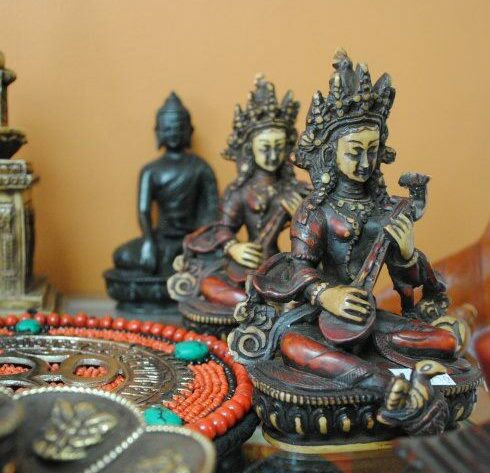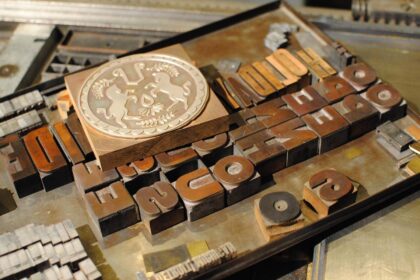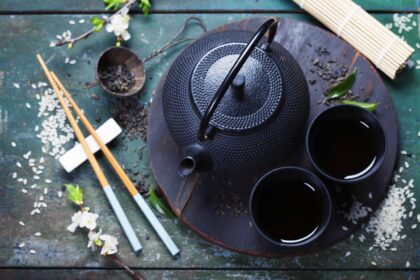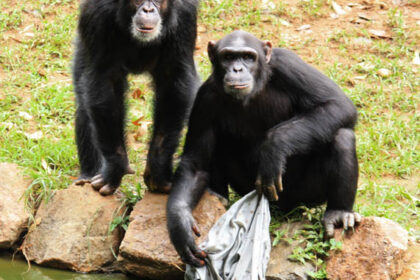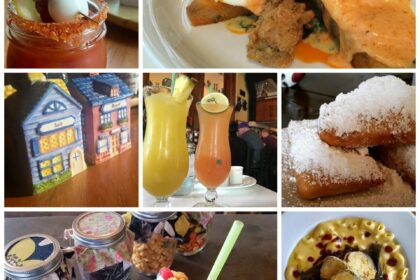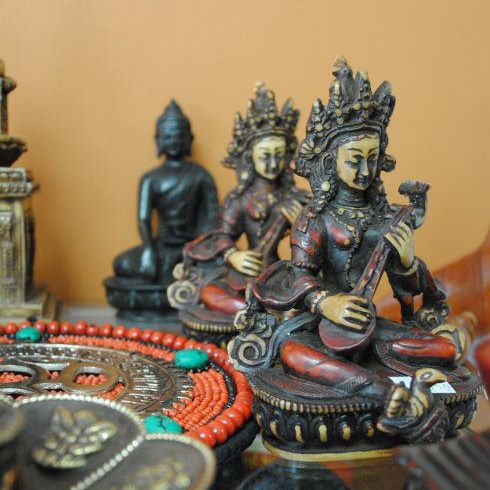
Most towns with a non-ignorable number of hippies and yoga teachers have a trademark Tibetan store. Whiffs of exotic incense and echoes of eerie ohms entice passerbys into dimly lit stores with colorful mask faces contorting into grotesque grins. Much of the appeal of the Himalayan lifestyle lies in its remote, mysterious and nearly inaccessible nature. But what is the history and culture behind these handicrafts? And how did the arts survive when persecutions during the Chinese Cultural Revolution uprooted most Tibetans and destroyed most of their cultural icons?
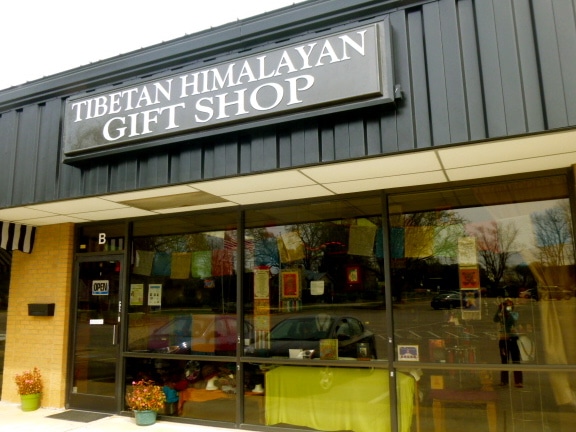
Unable to climb amongst the clouds of Shangri-la, Tibet to investigate these unique cultural traditions, I go to the next best place: Tibetan Himalayan Gift Shop in Cary, North Carolina. From the outside, it may not look like much, blending into the rest of the sepia-colored strip mall across the railroad tracks in the heart of the Research Triangle’s suburbs. But this authentic, family-owned business is tightly connected to Tibet, Nepal and Northern India where owners Ngawang Choechen and Tenzin Dolma grew up.
Despite the listless exterior, I open the shop door to an explosion of cheerful color. On a television screen, the Dalai Lama sits surrounded by pools of his saffron and persimmon-colored robes, sharing simple messages about tolerance and peace. Posters of the snow-capped Annapurna mountain region punctuate painted “nasmaste” wooden carvings, shimmering silken tangkas and smiling ceremonial masks. Ngawang, one of the owners, emerges from a curtain in the back, anxious for a tea party, “Hello, hello! Care to share some milk tea with me today?”.
I eagerly accept, catching a whiff of sweet cardamom as I bend to sip the thick, creamy chai that immediately brings back memories of my two summers in India. Like most visitors, chatting with the owners about Himalayan culture draws me to the store almost as much as perusing the extensive selection of merchandise.
The Owners
Ngawang was born in independent Tibet where he spent his childhood, with a family who made handicrafts as a means of survival. Tibetan families and villages prided themselves in self-sufficiency, feeding themselves with food from the farm and clothing themselves in handmade outfits.
“Clothes, like you see here with a woolen sweater or woolen jacket, my mother used to make for us and my father would make our shoes,” he reminiscences. “My father and his friends would cut the sheep fur, my mother and her friends would weave and dye the wool and we’d bring it to a local tailor to design and make the clothes… Not just clothes but the instruments and crafts too- my father could make drums and as a child, I’d make bamboo flutes”.
Tibetans have always been a spiritual people, valuing their traditional song, dance and Buddhist faith. The Chinese, under the belief “religion is poison”, invaded this faith-filled small, rural country during their cultural revolution from 1956 to 1976. They destroyed countless pieces of art, sculpture and artifacts while demolishing all but 15 of Tibet’s 6,000 monasteries.
The Communist Chinese occupation of Tibet in 1959 forced His Holiness the Dalai Lama and some 80,000 Tibetans to flee to India and Nepal, including Ngawang and his family. Fortunately, the Dalai Lama made preserving traditional performing arts a priority and established the Tibetan Institute of Performing Arts in Dharamasala, “Little Tibet”, just four months after his arrival in India in 1959. At a refugee school, Ngawang learned the Tibetan language, music, dance and the arts in additional to core subjects.
Ngawang spread his love of learning and Tibetan traditions as a schoolteacher and administrator for over 20 years in India and Nepal before coming to the United States in 2000. In America, he stayed true to his roots, working as an Interpreter for the Tibetan community in New York for over three years and later as an Executive Director for the Tibetan American Foundation of Minnesota in their Tibetan Culture Center. After several years of living in Raleigh, he opened the gift store in November 2011 with his wife, Tenzin Dolma, who was born to a Tibetan family in Nepal. Before coming to the United States, she worked in a Tibetan refugee school and helped Ngawang in starting a Nepalese private school.
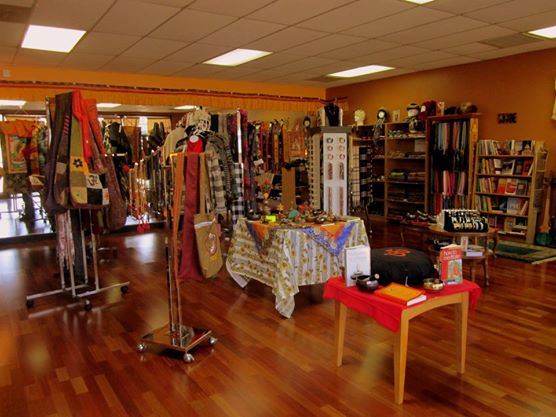
The Shop
The shop attracts a wide variety of visitors, from Nepalese people nostalgically looking to purchase traditional clothing to Muslim women shopping for head scarves, Buddhists looking for religious artifacts but mostly Caucasian Americans, like me, curious about the culture of the Himalayan region.
Products include everything from clothing—tye-dye leggings, fleece-lined sweaters to airy, flowy tops—to wall decorations, to furniture including Tibetan tea tables, to books on Buddhism, to incense, healing salves and teas concocted by Tibetan physicians.
One of shop’s the most popular items are singing bowls, a standing bell that is struck around the rim to produce a harmonic sound, tuning into the sacred “ommm” of the universe. This product originated in India but came to Tibet around the 8th century and became very popular, used by Buddhists to signal the beginning and end of silent meditation. Today, teachers, doctors and individuals who meditate use the resonating hum of these bells for meditation, music, relaxation and holistic healing, as the tones supposedly synchronize the left and right side of the brain.
Ngawang explained singing bowls are just one example of items and traditions exchanged between Tibet and India. Back in the 11th century, Buddhists took refugee in Tibet after fleeing an increasingly Hindu India. As mentioned previously, India provides a major haven for Tibetans in exile today. Now these two countries share much of the same traditions and art, with even Hindus and Buddhists using similar objects, just with a different name. If you want to learn more about how political and religious disruption fostered significant exchanging of imagery, text and religious practice between North India in Tibet in the 11th century and today, check out “Tibet and India: Buddhist Traditions and Transformations” exhibit at the Metropolitan Museum of Art, now through June 8, 2014.
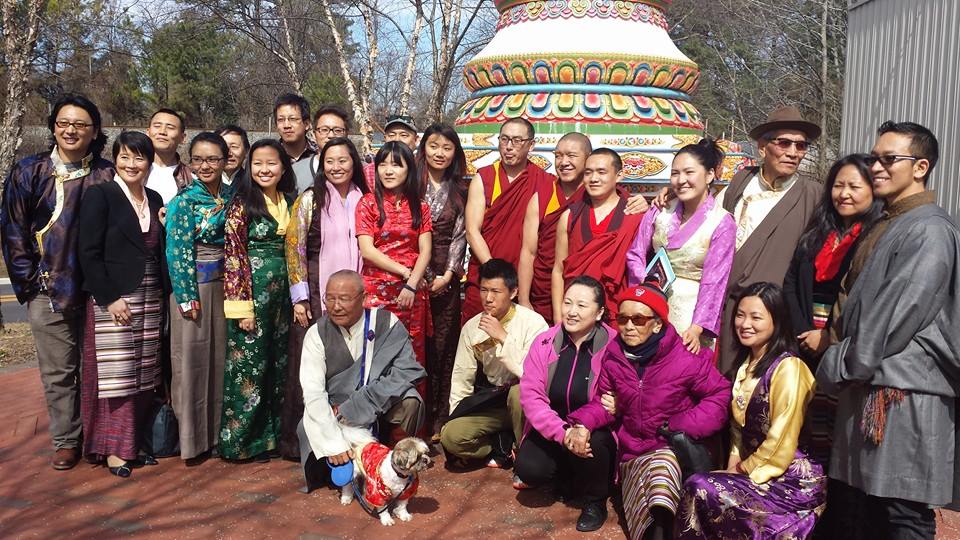
Champions For Tibetan Culture
In addition to using the store to inspire awareness and appreciation of the Tibetan culture, Ngawang’s whole family is actively involved in volunteering at the Kadampa Center for Tibetan Buddhism in Raleigh. His daughter teaches children about the basics of Buddhist, his wife cooks momo (Tibetan dumplings) for temple festivals and he coordinates events, like a traditional dance for the Dalai Lama’s birthday celebration downtown. Ngawang hopes to train American volunteers to put on a similar performance to commemorate the store’s anniversary in October.
Throughout the years, people have requested lessons from Ngawang on the Tibetan alphabet, prayers, song and dance, and he’s usually happy to oblige. If you’re curious about the story behind any item in the store, he’s prepared free pamphlets about popular Tibetan topics. As long as the shop isn’t too busy, Ngawang will happily offer you a cup of milk or lemon ginger tea, and to share information about om mani padme hum or the history of singing bowls.
In Closing
In summary, Ngawang has helped ensure Tibetans maintain their distinct cultural identity and share their story, even thousands of miles from home. Stop by the shop for an array of exotic and useful items or have some tea with the owner. If the store fuels your cultural curiosity as much as it does mine, there’s a world of ethnic shops in the same plaza. Taste flavors of Tibet at the brand new “Himalayan Nepali Cuisine” restaurant next door. Continue your vicarious globe trotting at Kalashri: Ethnic Indian Art and Fashions on the shop’s other side. Walk around the corner to find a Hispanic supermercado/carniceria, Korean steakhouse, Peruvian charcoal broiled chicken restaurant, African market, Japanese grocery store and gift shop all in the same plaza.
Tibetan Himalayan Gift Shop
746 E Chatham St, Cary, NC 27511
(919) 388-3373
Open Mon-Sat 10:30a – 8p & Sun 11am – 7pm
Also Check Out:
Powerful Female Sculpture In NYC
How Rhino Poaching Is Funding Terrorism (And How You Can Help Stop It)
Quechua Culture: Preserving The Ancient Peruvian Weaving Tradition
Do you have a favorite Tibetan/Himalayan shop near you? What makes it special?
Katie Foote
Latest posts by Katie Foote (see all)
- 8 Outstanding Conservation Safaris Around The World - Apr 12, 2022
- These 10 Women Whiskey Distillers Will Make You Crave A Manhattan - Dec 12, 2018
- Ethical Travel: Should You Visit Thailand’s Long Neck Women Villages? - Dec 9, 2018
- 8 Pioneering Vegetarian Vacations Around The World - Aug 13, 2018
- A New Perspective: Can Travel Help Reverse Alzheimer’s? - Aug 5, 2018

